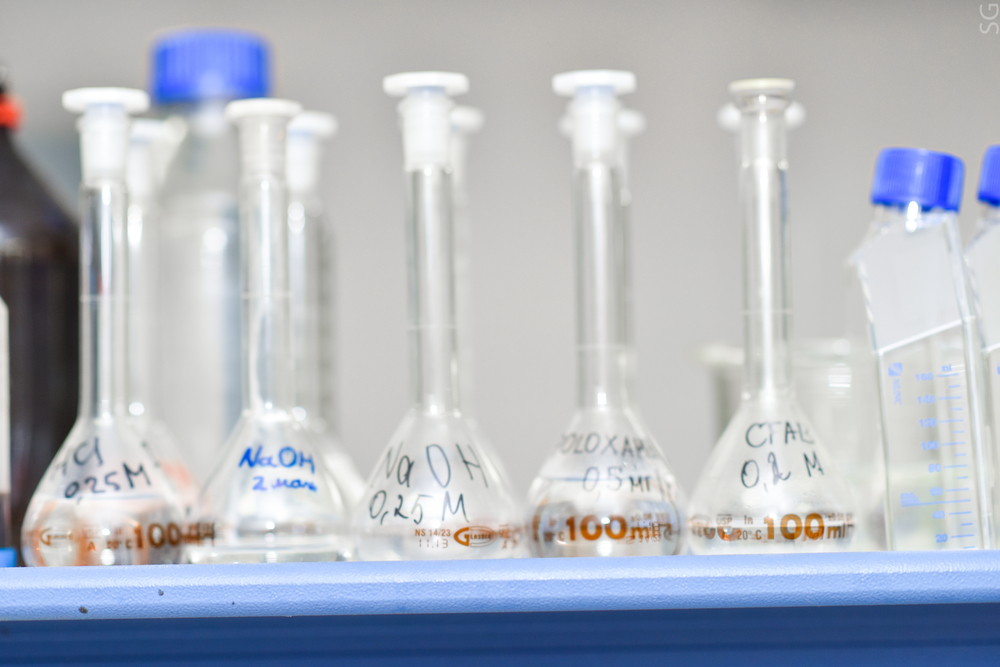Scientists from the Department of Chemistry at Lomonosov Moscow State University (MSU) and researchers from NUST MISIS have developed a new and simple method of synthesizing magnetic nanoparticles of ferrous oxide to be used for cancer diagnosis and therapy.

As particles of substance decrease to hundreds or tens of nanometers, the proportion of surface atoms that have high energy increases dramatically. This increased share of surface energy changes the chemical and physical properties of the material and opens up new directions for the application of nanotechnologies.
Magnetic nanoparticles have great potential in medicine and biology. Nanoparticles of a certain size can selectively accumulate in the vessels of tumor tissues. Pores in the vessels feeding a tumor are much larger than pores in healthy vessels, so nanoparticles can “fall” into them and thus accumulate directly inside the tumor. With the help of magnetic resonance imaging (MRI) it`s possible to see the accumulation of nanoparticles and precisely monitor the development of cancerous tumors.
The oncological possibilities for magnetic nanoclusters is just as promising. Nanomagnets absorb energy in a variable high-frequency magnetic field, and that energy is later converted into heat during a relaxation stage. This heat, which can reach up to 47 degrees Celsius, can kill cancer cells. Healthy cells are not vulnerable to this heating process because they lack enough “heating centers”. This high-frequency magnetic field therapy is called hyperthermia.
As the researchers note, nanoparticle cluster collections give them unique physical and chemical properties. These nanoparticles can be considered as individual nanoobjects, even though their properties are the result of the contribution of each nanoparticle that helps to form the cluster. Cluster nanoparticles also have a more developed surface that can be modified by molecules.
A group of researchers from the Department of Chemistry at Lomonosov MSU, together with colleagues from the Biomedical Nanomaterials Laboratory at NUST MISIS, led by Professor Alexander Majouga, Dr. Sci (Chemistry), have developed a completely new way of synthesizing magnetic nanoparticles based on their use in the process of various organic acids. The research group has already examined the structure, phase composition, and magnetic properties of the unique new samples.
A relatively simple synthesis of nanoparticles was done in the thermal decomposition of iron (III) ion complexes with organic acids.
By varying the nature of the organic acid — the concentration of the initial solutions and temperature — researchers obtained nanoclusters of the required shape and size.
“Cyclocarboxylic acids are surface active substances that are specifically absorbed (collected) on the edges of growing crystals, and as a result [of this accumulation] it is possible to get a cluster of a certain — a necessary — shape and size by using a particular acid”, explained Professor Elena Beloglazkina, Doctor of Chemical Sciences and one of the researchers from the Department of Chemistry at Lomonosov MSU.
NUST MISIS scientists carried out studies on the magnetic properties of iron oxide nanoclusters.
“The synthesized nanoclusters possessed a high value of magnetic saturation. The higher the magnetic saturation of the substance, the smaller the applied magnetic field for magnetizing the particles”, said Aleksey Nikitin, engineer at the Biomedical Nanomaterials Laboratory at NUST MISIS.
The research results were published in Langmuir.
The synthesized nanoclusters have shown high values of T2 relaxivity, which indicates their potential efficiency when used in magnetic resonance imaging (MRT) as contrast agents.


